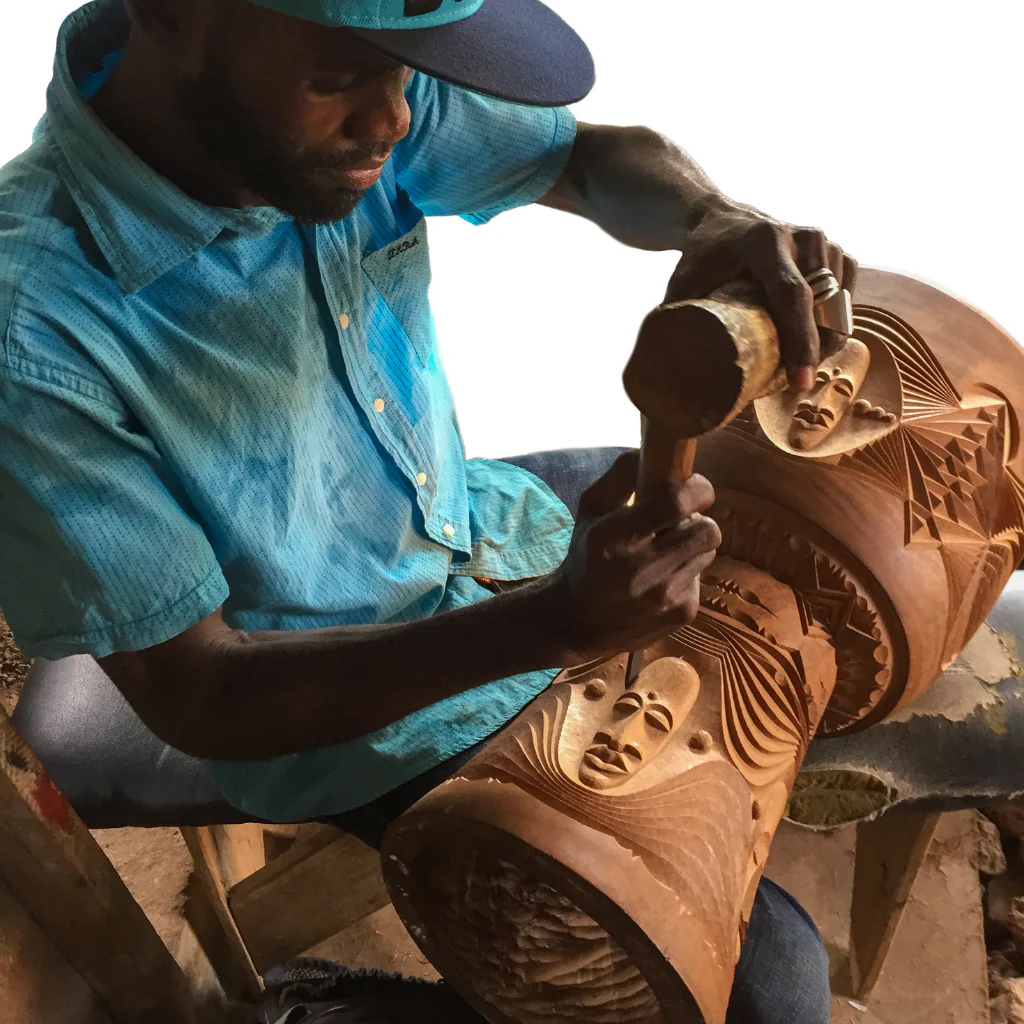In the evolving landscape of hand drumming, we find ourselves at an exciting crossroads filled with opportunities for growth and notable challenges. As more individuals become drawn to drumming—whether through vibrant drum circles, energetic music festivals, or informal gatherings—the importance of understanding and respecting the root traditions of hand drumming has become increasingly clear. Engaging authentically with traditional drumming practices and the wisdom of experienced teachers is essential not only for individual growth but also for cultivating a thriving, cohesive community.
At its core, traditional hand drumming serves as a vital tool of connection and expression. It offers a rich tapestry of cultural history, encompassing various rhythms, techniques, and purposes that have been passed down through generations. Understanding this heritage is crucial for any drummer, as it invites deeper appreciation and respect for the craft.
This understanding can spark creativity while allowing individuals to honor the collective knowledge of the past. Unfortunately, as drum circles grow and new participants emerge, the guidance and mentorship that were once prevalent seem to be diminishing. This trend may result in an environment where chaos overshadows the joy of shared music-making.
As drum circles expand, the essence of what they can offer may become diluted unless we actively preserve their core values. Facilitators and experienced drummers play a pivotal role in providing context and teaching, deepening participants’ understanding of the instrument and its cultural significance.
Without this guidance, we risk witnessing drum circles devolving into showcases of individual talent rather than nurturing spaces for communal expression. In larger gatherings, it’s not uncommon for the focus to shift away from collaboration and collective rhythm, leading to moments where the loudest or fastest players dominate the experience.
Music is highly personal, and I wholeheartedly believe in the importance of individual expression. Yet, there is an equally pressing need for mutual respect and acknowledgment of the diverse traditions that shape the world of drumming. As a passionate advocate within this community, I recognize that we each have different visions for what drumming can embody. However, the absence of standardized practices or a shared understanding can lead to confusion about what it means to participate in a drum circle.
It is imperative that we collectively acknowledge the invaluable role of drumming teachers and the profound knowledge they provide, rather than attempting to dictate how others should engage.
We must encourage a culture that values listening, learning, and collaboration. When such a culture is neglected, we risk creating environments where individuals view drum circles merely as platforms for self-expression, often neglecting the foundational principles of unity, respect, and shared engagement. This individualistic mindset can clutter the soundscape and overshadow the collective rhythm we strive to create.
The rising popularity of traditional instruments like the djembe has changed how we approach drumming. While these instruments significantly elevate the experience, the focus has sometimes shifted toward individual performance rather than the rich, interactive experience that drumming can foster.
This raises compelling questions about how we can cultivate not just a space for personal expression but a community where everyone feels valued and acknowledged. It is our responsibility as drummers to nurture this environment and to learn from one another, regardless of skill level.
Efforts to establish guidelines within drum circles—such as asking permission before using someone else’s drum or fostering an atmosphere of mutual respect—are commendable. However, these guidelines often fall by the wayside if participants lack awareness of or engagement with the principles that underpin them. Every gathering should be a space for growth and understanding. Yet, vital lessons can be easily overlooked if participants fail to grasp the deeper meanings behind the instruments they play.
A notable example is the djembe, an instrument of immense cultural significance rooted in West African traditions. Unfortunately, many drum circle participants struggle to explain the meaning of the word “djembe,” its origins, or the cultural heritage that birthed it. This ignorance highlights a troubling built-in bias against African cultural elements, often unrecognized by those who casually engage with them.
In contrast, there is a broader awareness around European instruments like the piano or guitar, indicative of a stark disparity in cultural appreciation that deserves careful reflection. The growing phenomenon of modern drum circles can unintentionally perpetuate this ignorance, reinforcing a disconnect between participants and the rich histories embedded within the instruments they embrace.
This lack of cultural awareness is further compounded by the tendency to romanticize the idea of “community” in drum circles without a nuanced understanding of the traditions that inform them.
While drumming can create a powerful sense of unity, failing to appreciate the origins and significance of the rhythms and instruments can lead to a superficial engagement that minimizes the depth of cultural expression. This ignorance can create environments where the finer points of rhythm and technique are overlooked, ultimately failing to honor the very roots they stem from.
As we forge ahead, it is crucial to create spaces that celebrate individual expression while also recognizing the importance of communal learning. We must honor the incredible depth of knowledge represented in traditional hand drumming. This journey is filled with potential; by fostering dialogues around shared values and practices, we can encourage deeper connections among participants.
In conclusion, the world of hand drumming offers not only the opportunity for musical mastery but also a chance to cultivate a profound sense of community. Each drumbeat carries the potential to unite us in our shared experiences and respect for the traditions that have shaped us. Let us celebrate the diverse voices within our drumming community while committing ourselves to learning, respect, and unity.
Together, we can ensure that as the landscape of hand drumming evolves, its roots remain deeply embedded in the rich soil of our cultural heritage, allowing us to embrace the extraordinary journey that drumming represents and navigate the future with intention.

